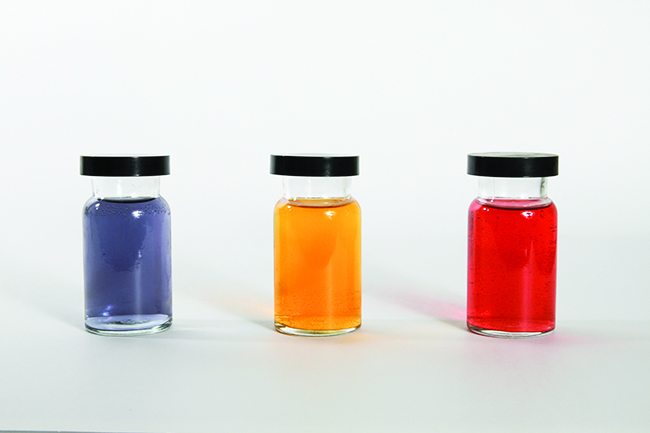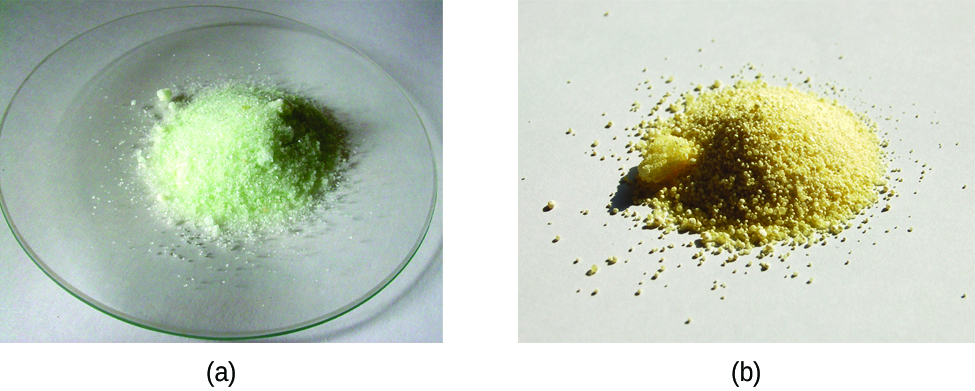| << Chapter < Page | Chapter >> Page > |
Because the complex absorbs 600 nm (orange) through 450 (blue), the indigo, violet, and red wavelengths will be transmitted, and the complex will appear purple.
red, 620–800 nm
Small changes in the relative energies of the orbitals that electrons are transitioning between can lead to drastic shifts in the color of light absorbed. Therefore, the colors of coordination compounds depend on many factors. As shown in [link] , different aqueous metal ions can have different colors. In addition, different oxidation states of one metal can produce different colors, as shown for the vanadium complexes in the link below.

The specific ligands coordinated to the metal center also influence the color of coordination complexes. For example, the iron(II) complex [Fe(H 2 O) 6 ]SO 4 appears blue-green because the high-spin complex absorbs photons in the red wavelengths ( [link] ). In contrast, the low-spin iron(II) complex K 4 [Fe(CN) 6 ] appears pale yellow because it absorbs higher-energy violet photons.

Watch this video of the reduction of vanadium complexes to observe the colorful effect of changing oxidation states.
In general, strong-field ligands cause a large split in the energies of d orbitals of the central metal atom (large Δ oct ). Transition metal coordination compounds with these ligands are yellow, orange, or red because they absorb higher-energy violet or blue light. On the other hand, coordination compounds of transition metals with weak-field ligands are often blue-green, blue, or indigo because they absorb lower-energy yellow, orange, or red light.
A coordination compound of the Cu + ion has a d 10 configuration, and all the e g orbitals are filled. To excite an electron to a higher level, such as the 4 p orbital, photons of very high energy are necessary. This energy corresponds to very short wavelengths in the ultraviolet region of the spectrum. No visible light is absorbed, so the eye sees no change, and the compound appears white or colorless. A solution containing [Cu(CN) 2 ] − , for example, is colorless. On the other hand, octahedral Cu 2+ complexes have a vacancy in the e g orbitals, and electrons can be excited to this level. The wavelength (energy) of the light absorbed corresponds to the visible part of the spectrum, and Cu 2+ complexes are almost always colored—blue, blue-green violet, or yellow ( [link] ). Although CFT successfully describes many properties of coordination complexes, molecular orbital explanations (beyond the introductory scope provided here) are required to understand fully the behavior of coordination complexes.

Notification Switch
Would you like to follow the 'Chemistry' conversation and receive update notifications?